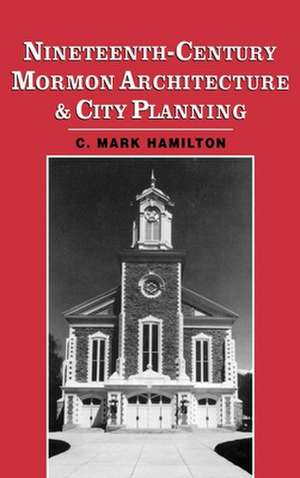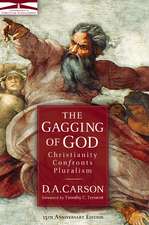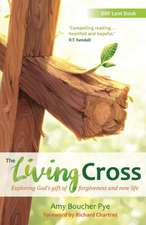Nineteenth-Century Mormon Architecture and City Planning
Autor C. Mark Hamiltonen Limba Engleză Hardback – 9 noi 1995
Preț: 732.90 lei
Preț vechi: 1108.80 lei
-34% Nou
Puncte Express: 1099
Preț estimativ în valută:
140.26€ • 152.30$ • 117.82£
140.26€ • 152.30$ • 117.82£
Carte tipărită la comandă
Livrare economică 11-17 aprilie
Preluare comenzi: 021 569.72.76
Specificații
ISBN-13: 9780195075052
ISBN-10: 0195075056
Pagini: 352
Ilustrații: 136 photos
Dimensiuni: 173 x 243 x 25 mm
Greutate: 0.69 kg
Editura: Oxford University Press
Colecția OUP USA
Locul publicării:New York, United States
ISBN-10: 0195075056
Pagini: 352
Ilustrații: 136 photos
Dimensiuni: 173 x 243 x 25 mm
Greutate: 0.69 kg
Editura: Oxford University Press
Colecția OUP USA
Locul publicării:New York, United States
Recenzii
This is an important study of the intersections of religion and material culture.
Nineteenth-Century Mormon Architecture & City Planning is interesting and readable because C. Mark Hamilton...adeptly handles what could have been, but is not, a dull subject.
Hamilton successfully explains how the architecture of the Mormon settlements was affected by religious beliefs as well as social conditions existing during the Westward expansion of the United States...a clear and detailed description.
Hamilton's book is an excellent addition to the burgeoning literature on the arts and humanities within the Mormon tradition.
...this book is important not only for Mormon scholars, but also for scholars of historic architecture and town planning and students of frontier history in Ohio, Illinois, Iowa, Nebraska, and Utah.
Nineteenth-Century Mormon Architecture & City Planning is interesting and readable because C. Mark Hamilton...adeptly handles what could have been, but is not, a dull subject.
Hamilton successfully explains how the architecture of the Mormon settlements was affected by religious beliefs as well as social conditions existing during the Westward expansion of the United States...a clear and detailed description.
Hamilton's book is an excellent addition to the burgeoning literature on the arts and humanities within the Mormon tradition.
...this book is important not only for Mormon scholars, but also for scholars of historic architecture and town planning and students of frontier history in Ohio, Illinois, Iowa, Nebraska, and Utah.










